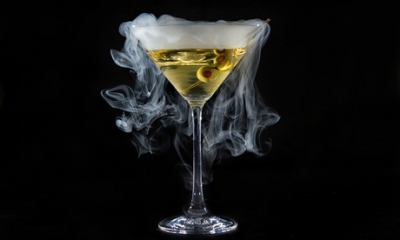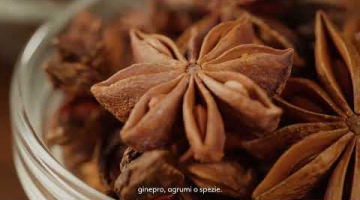A guide from 1948 still contains the best advice about cocktail-making – but modern mixologists use plenty of 21st-century science, too. Is all that effort worth it?
David E Embury was a lawyer, cocktail enthusiast and all-round stickler. Incredulous that people thought they could serve "any haphazard conglomeration of spirituous liquors, wines, bitters, fruit juices, sugar, milk, eggs, cream and anything else that happens to be leftover from last week's picnic supper", he wrote a book called The Fine Art of Mixing Drinks to address the issue. This was back in 1948, but today it is still considered by mixologists such as Dick Bradsell and Tony Conigliaro the key literature for their craft.
The book's introduction nods to why I'm wary of cocktail-drinking as a pastime (other than it being a prohibitively expensive way to get drunk). Embury's generation learned to make drinks in the prohibition era with harsh bathtub gin, therefore "the primary object in mixing a cocktail became the otherwise emollient and anti-emetic ingredients to make it possible to swallow a sufficient content of alcohol to ensure ultimate inebriety". Cocktails remain a fancy method of making hard liquor extremely palatable. Overpriced alcopops, if you will.
That said, a sublime cocktail on a special occasion can be mind-blowing in the best possible sense. Embury wrote that a proper cocktail should whet the appetite, stimulate the mind, please the palate and the eye, taste of booze without blowing your head off and be well-iced. The lengths to which bars will go these days to tick Embury's boxes, part customers from their hard-earned cash and offer the ultimate multi-sensory experience are flabbergasting.
Stimulating the mind
"When we start to work on a drink, we first create the narrative," says Tony Conigliaro of 69 Colebrooke Row in north London. The idea is storyboarded as though it's a piece of theatre, which in a way it is. Take one of Conigliaro's drinks, the Terroir. It's an exploration of earthy, mineral and mossy flavours, playing around with the notion that the land on which a grape is grown will influence a wine's character. How could the drink's ingredients, as listed on the menu – "distilled clay, flintstone and lichen" – not pique your interest? To serve, the bartender turns sommelier, opening a wine bottle at the table and describing the processes that have made the drink. Then, instead of wine, out comes this incongruous concoction.
Likewise for Thomas Aske, one of the pair behind the Worship Street Whistling Shop in Shoreditch, east London, who regularly lectures on multi-sensory drinks, a cocktail always starts with a story. "It could be derived from anything but often it's the brand of spirit you're using," he says. For instance, a barrel-aged cocktail based around Clynelish highland whisky was cooled with a frozen pebble from the coast of Scotland. "It could add a bit of minerality," says Aske (unsure whether that effect would be physiological or purely psychological), "but it also can hold its temperature without offering the dilution that ice does, so you've still got the intensity of flavour."
Pleasing the eye
"The mind immediately begins to make assumptions on the flavour based on appearance," says Aske. Although looking fantastic, he adds, "doesn't necessarily mean having a vessel of the utmost rarity or flamboyance". If you do go for an outlandish garnish, he says, there has to be a reason, and cites a "detonated garnish" he created for a drink based around Belvedere Unfiltered vodka, which has a freshly baked bread aroma. A helium balloon is tied to the glass with magician's string ("which is a fuse, basically"). The drink is served with matches so that the drinker can ignite the fuse and make the balloon go bang, exciting ears, as well as eyes, throughout the bar. When it pops, the balloon releases essence of fresh bread, enhancing the drink's flavour.
Another cocktail high on the most-Instagrammed list is the digidiva from Artesian in central London. "It's most important to open the eyes," says bartender Simone Caporale. "The rest we take care of." The drink comes in a glass tube with small holes along the top into which edible flowers and freshly foraged sprigs of pine are placed, releasing an aroma to complement the lemony acqua di cedro liqueur in the drink. It is not unusual for bars to design their own drinking vessels like this. Conigliaro commissioned a ceramicist to create an oyster-shell drinking vessel for his Savoury Prairie Oyster, and the Ritz this summer had a glass stiletto made to serve their Tallulah, to commemorate Tallulah Bankhead drinking champagne from her own slipper at the Ritz in 1951.
Pleasing the palate
As with high-end cooking, the quest for flavour perfection in drinks now routinely takes place in rooms more like labs than kitchens. Rotary evaporators are used to distill delicate flavours from fresh ingredients for liqueurs and cordials at low temperatures. "If you want to take all the flavour from a raspberry without stewing the fruit, and cooking it and breaking its cells down," says Aske, "then you need to do it at a very low temperature – 20-30C." His team also use a sous vide to make cordials and shrubs (originally a 17th-century medicinal drink) to use in cocktails. Their honey and lavender shrub, for example, is slow-cooked in the sous vide with cider vinegar, which contains acetic acid and adds satisfying length to a drink. "You could make a shrub by boiling," he says, "but you could end up losing the lavender's floral note while getting its green chlorophyll bitterness."
The Whistling Shop is also experimenting with using ultrasonic sound waves to turn liquid into vapour, serving a gin and tonic that you inhale. "You get the aroma and flavour but none or very little alcohol," enthuses Aske. "It's purely a case of coating the mouth, like breathing in flavoured air."
Stimulating the skin
The tactile qualities of glassware and ingredients are deeply considered, too. Conigliaro, for instance, "had the special effects department of Central Studios make us a werewolf-like skin, with hair growing out of it, for a drink called the silver bullet." He has also experimented with flocked and rough, sandpapered stems, and tied some fine rope around the stem of a nautical-themed drink.
Ingredients-wise, I can confirm that the Habanero Margarita at Shrimpy's in King's Cross, north London, is a brilliantly tingly experience. And sichuan pepper is big in New York cocktails. "Tactility of the mouth," says Conigliaro, "is something I've been lecturing about for a while." He talks about how having something tiny done at the dentist feels so exaggerated and huge, as an example of how sensitive mouths are. In the early days of 69 Colebrooke Row, he devised a dry martini that included a concentration of tannin. "You don't smell anything, but tannins dry your mouth out, so you make more saliva, which then intensifies the sense of taste."
Sheesh, all this work going into a drink that disappears down the gullet within minutes. Is it worth the fuss, or would you rather have a simple G&T?
thanks to original post: http://www.theguardian.com/lifeandstyle/wordofmouth/2014/aug/19/science-...
















